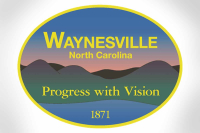What you really want to know when new property values arrive in the mail
Mailboxes across Macon County were blanketed with new property value notices this week, the first countywide appraisal since 2007.
As you ripped open the envelope, there were probably two things on your mind:
Meet Richard Lightner, the eagle eye of Macon’s reval
 Richard Lightner isn’t one for nostalgia.
Richard Lightner isn’t one for nostalgia.
For nearly 30 years, he’s been running the property reval show in Macon County. But there’s not much he misses about the old days.
Macon’s reval: unplugged and uncensored
The time of reckoning is finally here.
Macon County’s first countywide assessment of real estate values since the bust came out this week, and it’s full of surprises. For starters, your property values probably didn’t go down as much as you thought they would.
The quest for the perfect comp
 Some weeks Tommey Allen spends more time behind the wheel than a long-haul trucker.
Some weeks Tommey Allen spends more time behind the wheel than a long-haul trucker.
It’s not all driving time though. Most of it is just idling along the curb, parked on the roadside and sitting in driveways. Over the past two years, Allen and the rest of the Macon County appraisal team have scouted every inch of road — paved, gravel, dirt or otherwise — to size up all 44,000 parcels of property and ultimately make a prognostication of what they’re worth.
Macon finalizes property values
Macon County’s tying up the loose ends on a property revaluation that will likely cause tax hikes for some and breaks for others, and the county’s tax director gave commissioners a heads up that they’ll probably be getting some phone calls over the next few months.
Round three: Haywood County takes on political adversary in property value dispute
A challenger in the Haywood County commissioner race lost ground last week in a fight with the county over his property values, a three-year dispute laced with political overtones.
Denny King claims the county incorrectly pegged the value of his home and land, which in turn determines his property tax bill. King has accused the county of mass errors in a countywide property revaluation conducted in 2011, a criticism that is a cornerstone of his campaign for county commissioner.
Signs of the pending bust were overlooked
A Main Street law office without windows is an odd place for a such a good view.
But Waynesville attorney Frank Queen has had a front-row seat to the mountains from here, witnessing thousands of acres trade hands — land with scenic vistas, along creeks, in forests, behind gates, on farms, hugging cliffs and tucked in coves — during the real estate boom of the 2000s.
Franklin passes property tax hike
Franklin residents will be paying a bit more on their property taxes next year following a unanimous decision by the Franklin Board of Alderman to increase the rate by 2 cents per $100. Currently, the rate is set at 25 cents, but the town had been thinking about raising it for a while.
No more Mr. Nice Guy
With the bottomed-out real estate market still stagnant, some property owners are having trouble seeing the point of paying property taxes.
Swain property owners will soon find out where they fall on real estate roller coaster
Just after the New Year, property owners in Swain County will find out just how well — or how poorly — their property weathered the real estate downturn.
Swain County is wrapping up a countywide property revaluation, where every home, lot, business and tract of land is appraised with an up-to-date real estate value. Property values in turn dictate how much someone pays in property taxes.





